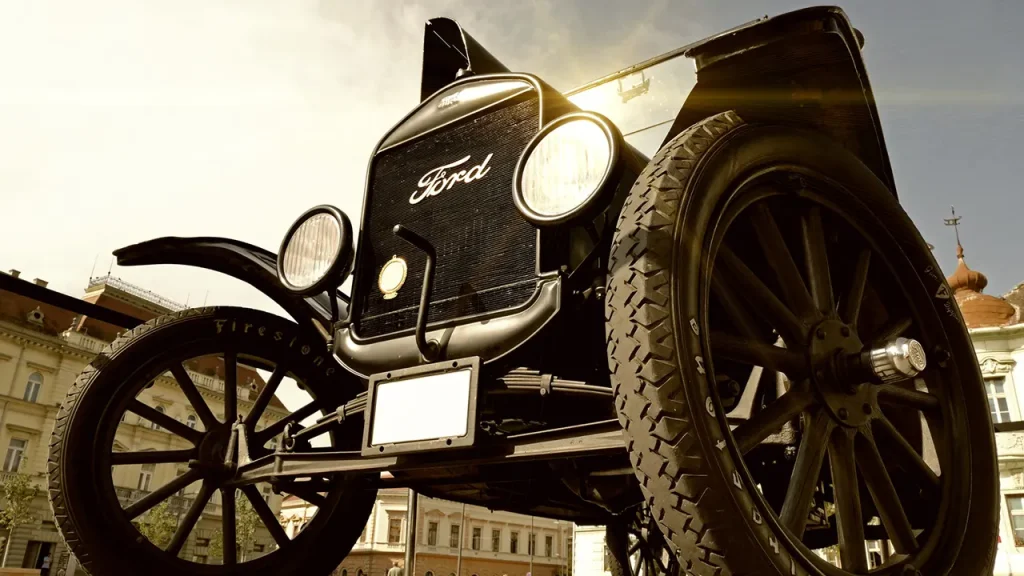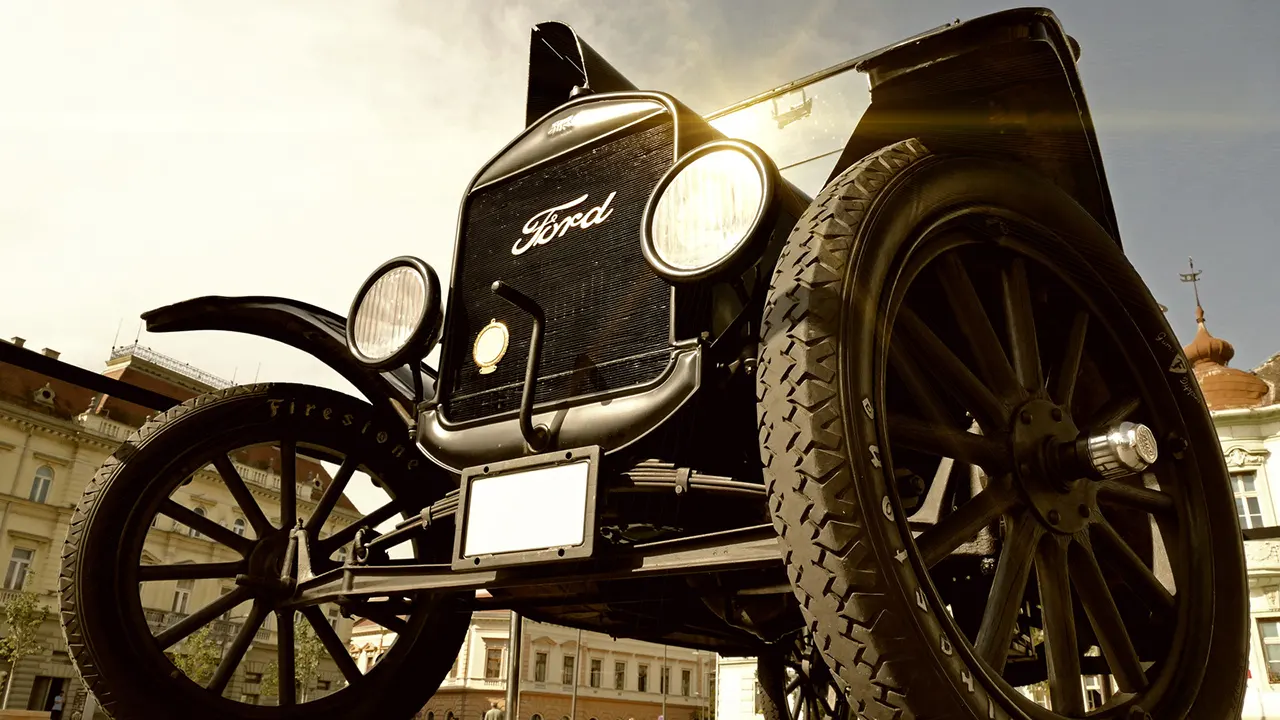
From Humble Beginnings to the Future — How Number Plates Have Evolved with Cars
From horse-drawn carriages to the sleek electric vehicles of the modern world, the evolution of automobiles has been nothing short of revolutionary. Often overlooked but integral to this progression is the ever so humble number plate, playing a pivotal part of car history.
Vehicle license plates were introduced in the UK in 1903 with the Motor Car Act. They were simple pressed aluminium plates meant to provide a basic means of identifying the vehicle. As the motor car became ubiquitous, the importance of a unique and traceable method of identification grew, paving the way to the more complex number plate systems that came after.
Number plates may have started off as basic stamped aluminium, but their designs have evolved too. They’ve gone through various fonts, sizes, shapes, and designs. More recently, 4D number plates have made an appearance on the marketplace.
1903 – The Motor Car Act
In 1903 the Motor Car Act was established to regulate vehicles on the roads. In the early days of automobile history, local authorities were responsible for registering new vehicles. The act required all vehicles to display a registration number and its purpose was to keep track of vehicles and impose road taxes.
1932 – a new number system
In 1932 a new numbering system was introduced that required numbers to follow a specific format of 2 letters followed by a space, followed by up to 4 numbers.
1960s – yet another number system
By the 1960s, local authorities started running out of available combinations and yet another numbering system was created in 1963.
1965 – DVLC established
Later in 1965, the Driver and Vehicle Licensing Centre (DVLC) was established in Swansea to take over responsibility for vehicle registration. It was renamed Driver and Vehicle Licensing Agency (DVLA) in 1990. DVLA is an executive branch of the Department for Transport.
Registration plates in the UK have always followed a specific format. The current system allows for easy identification of the age and place of registration of the vehicle. Furthermore, with DVLA opening up their database to private businesses in the 1980s, the sale of private plates has become a booming industry of its own.
This journey reflects not only the advances in technology, but also societal shifts, illustrating how number plates have evolved with the changing times.
Customise your 3D number plates
Build unique number plates with our intuitive and fully interactive number plate builder.
Build Your 3D Number Plates
Number Plates in History — An Often Overlooked Aspect of Automobile Evolution
Number plates have played a key role in the history of automobiles. Way back in the 1890s, when cars first hit the roads in the UK, they were few and far between. There wasn’t much need for a vehicle identification system because there just weren’t enough cars on the roads. However, as time progressed and the motor car became more common, a means of identifying individual cars became a necessity.
That’s where number plates come in. Britain was one of the first countries to recognise the need for a vehicle registration system and passed the Motor Car Act in 1903. This act of parliament made it a requirement for all vehicles to display license plates. These early plates were simple, displaying just a few characters and number – for example “A 1”, “A 2”, etc.
The UK registration system has changed 9 times since 1903, with the current system set to last until 2051. Yes, the UK will run out of current-format numbers in 2051, at which point the format will simply be reversed and will last another 50 years.
Further Reading
You may also be interested in: Cinematic Wheels: The Cars that Became Movie Stars
The Evolution of Cars — A Journey from Horseless Carriages to Electric Vehicles
The journey began in the late 1880s with the horseless carriage. The early automotive pioneers began experimenting with a novel concept – the horseless carriage. The horseless carriage was a basic, rudimentary vehicle that used steam engines to power them. Steam, of course, is not a practical means of propulsion for a motor car.
Engineers in the 19th century paved the way for another invention, without which the motor car would not have been possible at all – the first commercially available liquid-fuelled internal combustion engine. Cars powered by these engines were not only more powerful and faster, but also smaller and more reliable than those powered by steam. Companies like Ford and Renault were early pioneers in the automotive industry, mass-producing affordable vehicles.
The internal combustion engine has made it possible for the auto industry to flourish and prosper ever since. We’re still mass-producing cars and trucks with petrol and diesel engines today, but there’s another revolution on the horizon: the electric car.
With the need for green energy and the looming threat of climate change, manufacturers like Tesla began to develop cars powered purely by electricity. Back in 2003 Tesla Motors was incorporated with the goal to be “a car manufacturer that is also a technology company”. The core technologies are batteries, computer software, and proprietary electric motors. Elon Musk, an early investor in the company, is now the CEO and owns 13% of the company.
The historical journey from horseless carriage to the electric cars of today encapsulates the incredible evolution of cars of the last 150 years and exemplifies the unending drive forwards in innovation and technology.
Customise your gel number plates
Build unique number plates with our intuitive and fully interactive number plate builder.
Build Gel Number Plates
A Trip Down Memory Lane With Key Moments in Automobile History
When we reflect on the pivotal moments in automotive history, some key milestones and events stand out.
1908 – The Ford Model T
The Model T – created by Henry Ford himself – was the first car ever to be mass-produced. The Model T was affordable, reliable, and easy to drive. Because the car was affordable, the Model T is responsible for the early push towards accessibility for average people.
1913 – Assembly Line Production
Another innovation of Henry Ford was the production line. Ford introduced the concept of an assembly line which drastically increase the efficiency of manufacturing the car, while simultaneously reducing the costs of production. This innovation plated a vital role in the development of the auto industry.
1939 – Automatic Transmission
Innovated by General Motors, the automatic transmission made driving more comfortable for the average driver, who could now forego shifting gears manually. The automatic transmission remains one of the most important inventions of automotive history.
1966 – Electronic Fuel Injection
The electronic fuel injection system made fuel delivery more efficient, eliminating the need for a choke or the need to pump the accelerator to get fuel to the engine. The Volkswagen 1600 was the very first car to use this technology, which was invented by Bosch.
1959 – The Invention of the Seatbelt
Doubtless one of the most historical innovations in automobile history is the invention of the seatbelt. Volvo engineer Nils Bohlin invented the modern three-point seatbelt, saving countless lives since. The three-point seatbelt has now become a standard safety feature. The use of a seatbelt didn’t become a legal requirement in the UK until 1983.
1975 – The Catalytic Converter
The catalytic converter, often referred to as a “cat”, was another introduction that had a significant impact on the auto industry. Cats take toxic gases and pollutants from the exhaust gases and convert them into less toxic chemicals. The cat was invented way back in the late 19th century, but it wasn’t until 1975 in the United States that manufacturers began equipping their cars with them. The U.S. Environmental Protection Agency’s regulations made it a requirement for manufacturers to install catalytic converted on their vehicles.
1990s – Hybrid Vehicles
Hybrid vehicles do have a long and interesting history, but it wasn’t until the late 1990s in the United States that they became a commercial success. Hybrid vehicles are less reliant on petrol and are “greener” than a standard ICE car. Major manufacturers include Honda, Toyota, and Mitsubishi.
2000s – Autonomous Driving Begins
Companies like Google and Tesla began the development of self-driving vehicles in the late 2000s. Advances in AI, computer technology, cameras, and driver-awareness systems have made it ever more likely that vehicles will one day drive themselves. While significant progress has been made in the march towards full self-driving vehicles, we’re still not there. The problems that need solving are complex, and it doesn’t look like we’re getting it any time soon.
2010s – Shared Mobility
The 2010s gave rise to an interesting concept – the idea of ride-hailing. Companies like Uber and Lyft made it possible to hail a ride from anywhere. The concept of shared mobility has changed the way people perceive transportation, which has led to a decrease in vehicle ownership and an increase of utilisation rates in some places.
Further Reading
You may also be interested in: Car Auctions – the 8 Most Expensive Cars Ever Sold at Auction
Automobile Revolution — How Cars Transformed from Luxury to Necessity
In the early 1900s, automobiles were a luxury reserved only for the rich. The automobile was a grand status symbol, displaying wealth and privilege. While they were fascinating inventions, their very high cost and low production numbers meant the average person was not able to afford to buy one.
Then came a revolution. Henry Ford innovated the assembly line in 1908, which dramatically reduced the costs of manufacturing, saved time, and democratised car ownership. The Model T – affordable and reliable – was suddenly within reach of the middle class. Not long after, vehicle ownership began to be perceived as a necessity, not a luxury.
These days, cars are intertwined with our daily lives. We use them to get to work, take the kids to school, go shopping, and play. Cars have become an integral part of the socio-economic fabric of society showing that once again, necessity is indeed the mother of invention.
The Automobile and Society — How Car History Reflects Social Change
In a way, the evolution of the car reflects societal change through the years. Early on in automobile history, cars were an emblem of wealth and prestige, owned by few but admitted by many. With technological advancements, cars became more accessible and began to symbolise democratic ideals of progress and mobility, reflecting the burgeoning middle class.
Furthermore, with the advent of affordable family-oriented cars like the Model T or the Volkswagen Beetle, a shift in societal structure began to occur. These cars catered to an expanding middle class, enabling a new era of personal freedom and mobility not seen before. Suddenly, the world became smaller and holidays became road trips.
More recently, the emergence of electric cars reflects our growing environmental consciousness. Car makers like Tesla have focussed on zero-emissions and sustainability, which are responses to a society increasingly aware of its ecological footprint.
Cars have always been the embodiment of societal evolution, from luxury status symbols to cheap and cheerful tools of the everyday. They reflect our values, aspirations, and our vision for the future. Their long history is our history – the history of human ingenuity and adaptability.
The Birth of the Modern Car — Pioneers and Innovations That Shaped Our Roads
The birth of the modern car was a convergence of both pioneering minds and groundbreaking innovations in engineering.
It began with the pioneers like Gottileb Diamler and Karl Benz, who built the first cars powered by internal combustion engines way back in the late 19th century. Diamler’s motor carriage and Benz’s Motorwagen set the stage for the automobile era, with their inventions forming the basis of the cars we drive today.
A huge leap forward came when Henry Ford created his Model T. Ford, the company who introduced the assembly line, revolutionised manufacturing of automobiles. As the 20th century unfolded, innovations in auto engineering were plentiful. From seatbelts and airbags to turbochargers and automatic transmissions, to fuel injection, catalytic converters, and GPS – technology has changed the way we drive forever. More recently, electric and autonomous vehicles are heralding a new era of sustainable transportation.
With each innovation, each pioneer, came a new milestone in automotive history. Their contributions have shaped our roads, cities, and lives, culminating in the vibrant landscape of modern motoring we navigate today.


